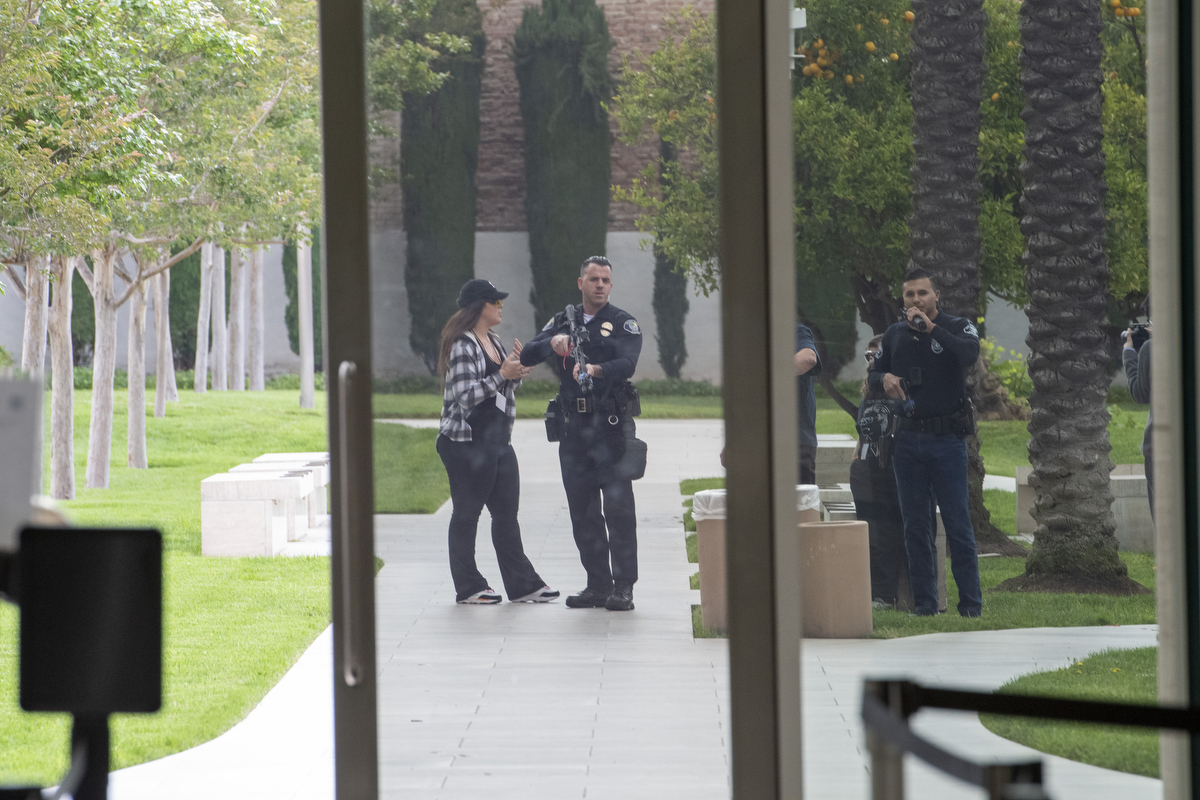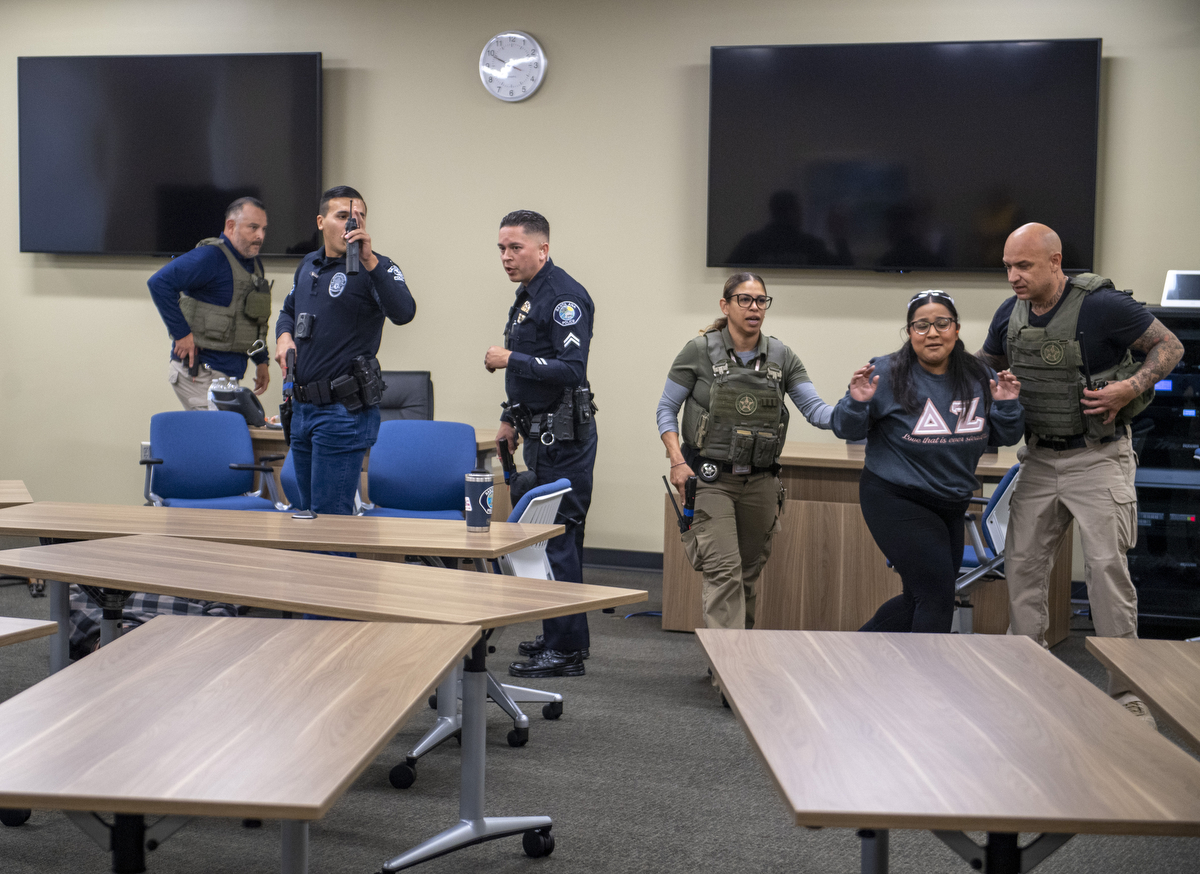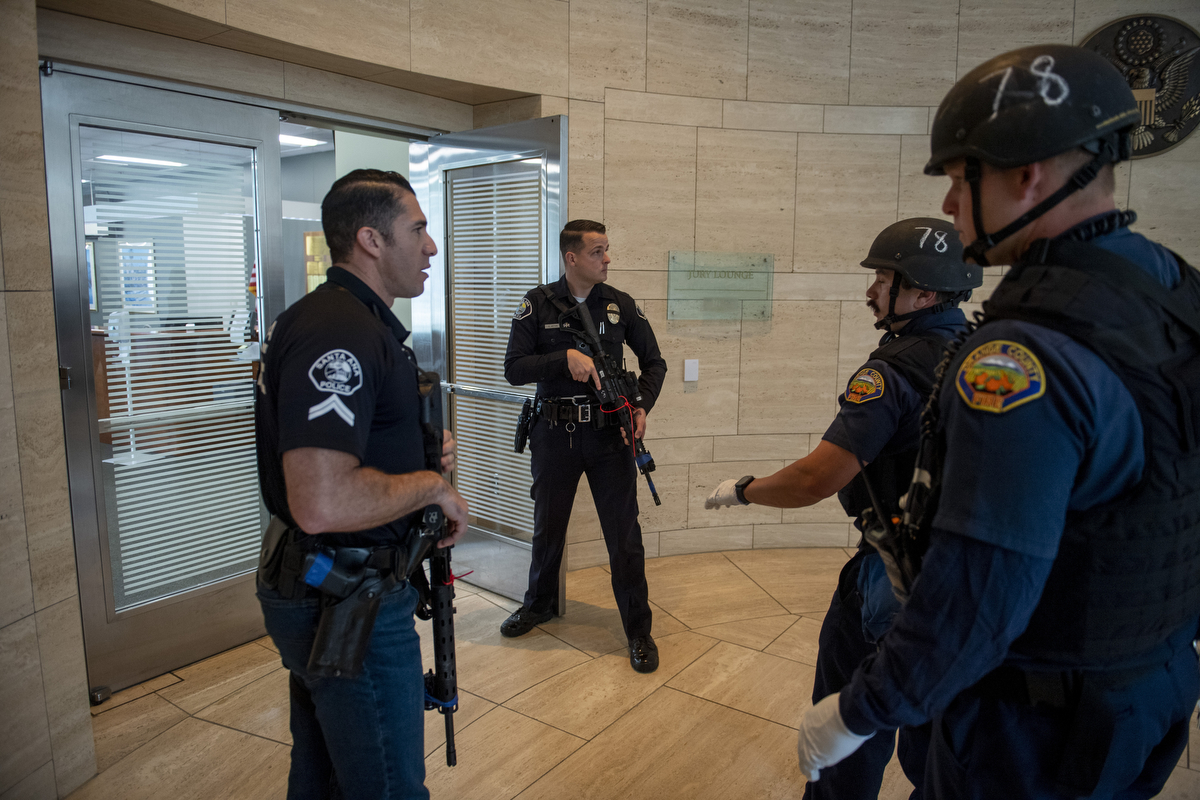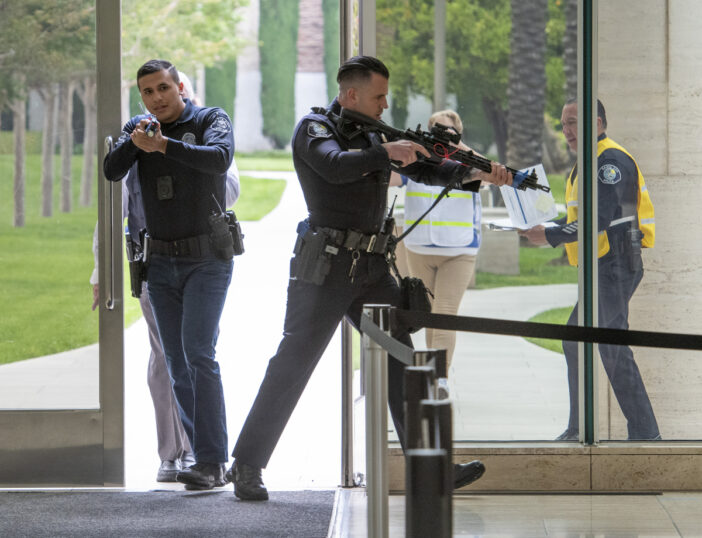The scene was chaos inside the federal courthouse in Santa Ana. Bodies were strewn in the lobby. As Santa Ana officers and fire department rescuers arrived, frantic witnesses pointed in the direction of the gunmen.
Thankfully, in reality, it was a quiet Saturday morning at the courthouse. The scores of “victims” consisted mostly of Police Explorers and CERT team members in costumes and makeup.
However, the responders in the simulated active shooter scenario, involving the Santa Ana Police Department, Orange County Fire Authority, U.S. Marshals Service, and courthouse personnel, were taking the drill very seriously.

Santa Ana Police Department hosted an active shooter demonstration at the Ronald Reagan Federal Building and United States Courthouse.
Photo by Michael Goulding/Contributing Photographer
According to Sgt. Ricardo Diaz of the Santa Ana Police Department and its Homeland Security detail, the simulation lasted about five hours.
“We try to bring as much authenticity to it as possible,” Diaz said of the scenarios which are held roughly on an annual basis.
“The training was really advantageous,” he said.
The scenarios help gauge the response, training, and procedures of the police and their partner agencies and “put it to the test,” Diaz said.

Santa Ana Police Department and other law enforcement agencies held an active shooter training at the Ronald Reagan Federal Building and United States Courthouse.
Photo by Michael Goulding/Contributing Photographer
About 25 to 30 Santa Ana police participated, as well as 15 OCFA firefighters and paramedics, while trained evaluators observed and graded the response. A detailed briefing was held afterwards.
In addition to reacting to the threat, the department ran through all the moving parts of dealing with a real situation, including setting up a command post, communications procedures, and bringing in a hostage negotiator if necessary. Diaz said the department practiced two scenarios, one in which shooters were on the loose and another in which a hostage situation developed.
Before the training begins, “We don’t know the actual scenario,” Diaz said.

Santa Ana Police Department and other law enforcement agencies held an active shooter training recently.
Photo by Michael Goulding/Contributing Photographer
A fire alarm is pulled to begin the scene. SAPD and firefighters respond and quickly learn of two heavily armed shooters. They must then coordinate to triage and treat victims, evacuate witnesses to safety, and locate, identify, and eliminate the threat.
“It’s very noisy and loud. We try to bring as much realism, but still be safe,” Diaz said.
By simulating the chaos of the real thing, Diaz said the officers and first responders learn how to quickly assess the situation and bring order to the turmoil.
“In the event of a real threat, the entire department would respond,” Diaz said.

Santa Ana Police Department and other law enforcement agencies held an active shooter training at the Ronald Reagan Federal Building and United States Courthouse.
Photo by Michael Goulding/Contributing Photographer
A lesson for the public
In the same way that officers train and drill, Diaz said it is important for the public to remain vigilant, alert, and prepared should an actual active shooter event occur.
As part of the national See Something Say Something campaign, online sites such as SafeOC contain information on how to be ready and react in the case of an active shooter.
“While law enforcement is usually required to end an active shooter situation, individuals can take steps to prepare mentally and physically for the possibility of this type of event occurring in order to save lives,” SafeOC states.

Santa Ana Police Department and other law enforcement agencies held an active shooter training at the Ronald Reagan Federal Building and United States Courthouse.
Photo by Michael Goulding/Contributing Photographer
Active shooter events have risen sharply in just six years from 20 in 2016 to 50 in 2022, with 2022 having the most fatalities in five years, according to the FBI. Nonprofit organizations such as the Gun Violence Archive and Everytown, which use much broader definitions for mass shootings that encompass injuries beyond fatalities, peg the number at more than 600 mass shootings in 2022.
Diaz urges the public to adopt the FBI’s “run, hide, fight” protocol in the case of an active shooter. Situational awareness and being prepared are key while out in public, he added.
“A lot of people don’t think about it, but at least if you have the mindset, it’s better than nothing,” Diaz said, noting that such preparation will help you react rather than freeze should the unimaginable happen.
The same is true for the professionals, which makes events such as the scheduled scenario drills invaluable.
“We all hope we’ll never have to confront it,” Diaz said of a shooting event, but with training he said officers will be ready to “react with their training, tactics, and tools.”

Santa Ana Police Department and other law enforcement agencies held an active shooter training at the Ronald Reagan Federal Building and United States Courthouse.
Photo by Michael Goulding/Contributing Photographer

Santa Ana Police Department and other law enforcement agencies hold regular active shooter trainings.
Photo by Michael Goulding/Contributing Photographer

Santa Ana Police Department and other law enforcement agencies held an active shooter training at the Ronald Reagan Federal Building and United States Courthouse.
Photo by Michael Goulding/Contributing Photographer
 Behind the Badge
Behind the Badge



